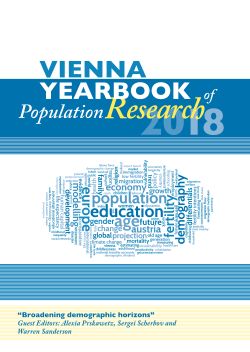
Vienna Yearbook of Population Research 2018, pp. 111-134, 2018/11/26
Broadening demographic horizons

When studying the economic consequences of changes in the age structure of the population, looking at economic dependency ratios provides us with some descriptive and intuitive initial insights. In this paper, we present two economic dependency ratios. The first ratio is based on economic activity status, and relates the number of dependent individuals to the number of workers. The second dependency ratio relates consumption to total labour income. To build up the second ratio, we rely on the recently set up National Transfer Accounts (NTA) for Austria. Simulations of the employment-based dependency ratio with constant agespecific employment rates indicate that the employment-based dependency ratio will increase from 1.23 in 2010 to 1.88 in 2050, based on a population scenario that assumes low mortality, medium fertility and medium migration in the future. The corresponding values for the NTA-based dependency with constant age-specific labour income and consumption are 1.12 in 2010 and 1.49 in 2050.We then compare how the dependency ratio would differ if we accounted for the increasing levels of educational attainment. While the education-specific age patterns of economic activities are kept constant as of 2010, the changing educational composition up to 2050 is accounted for. In Austria, higher educated individuals enter and exit the labour market at older ages and have more total labour income than lower educated individuals. Our simulations of the education-specific economic dependency ratios up to 2050, based on the optimistic projection scenario of low mortality and high educational levels in the future, show that the employment-based ratio will increase to 1.68 and the NTA-based dependency ratio will rise to 1.28. These increases are still considerable, but are well below the values found when changes in the educational composition are not taken into account. We can therefore conclude that the trend towards higher levels of educational attainment may help to reduce economic dependency.